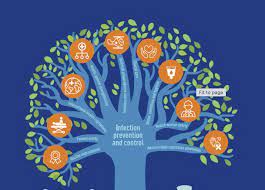September 17, 2024 – A groundbreaking study published in The Lancet reveals a dire forecast for global health, predicting that more than 39 million people worldwide could die from antibiotic-resistant infections between now and 2050. This alarming projection comes from the Global Research on Antimicrobial Resistance (GRAM) Project, marking the first comprehensive global analysis of antimicrobial resistance (AMR) trends over time.
The study highlights that over one million people have died each year from AMR-related causes between 1990 and 2021. The future outlook is even more concerning, with estimates suggesting that AMR could directly cause 1.91 million deaths annually by 2050, marking a nearly 70% increase compared to 2022. The broader impact of AMR, including deaths where resistance played a role, is expected to rise by almost 75%, from 4.71 million to 8.22 million annually.
AMR has had a varied impact across different age groups over the past decades. While AMR deaths among children under five years old decreased by 50% from 1990 to 2021, deaths among individuals aged 70 and older surged by more than 80%. This trend is expected to continue, with AMR deaths among young children projected to halve by 2050, while deaths among the elderly are expected to more than double.
The study underscores the urgent need for multifaceted interventions, including enhanced infection prevention, vaccination efforts, judicious antibiotic use, and the development of new antimicrobial agents. Dr. Mohsen Naghavi, a lead author of the study and Team Leader of the AMR Research Team at the Institute of Health Metrics (IHME), University of Washington, emphasized, “Antimicrobial medicines are fundamental to modern healthcare, and the increasing resistance to these medicines poses a major global health threat. Our findings highlight the growing danger of AMR and the critical need for strategic action.”
This new analysis builds on the GRAM Project’s earlier 2022 study, which revealed that AMR-related deaths in 2019 surpassed those from HIV/AIDS or malaria, directly causing 1.2 million deaths and contributing to 4.95 million additional deaths. The latest study extends this analysis, forecasting AMR’s impact through 2050 based on historical data from 520 million individual records across 204 countries.
Key findings include a significant increase in deaths due to methicillin-resistant Staphylococcus aureus (MRSA), which more than doubled from 57,200 in 1990 to 130,000 in 2021. Similarly, resistance to carbapenem antibiotics among Gram-negative bacteria has surged from 127,000 deaths in 1990 to 216,000 in 2021.
The study projects that if current trends continue, AMR will result in more than 39 million deaths globally between 2025 and 2050. However, potential interventions could mitigate this crisis. Improved infection control, better access to antibiotics, and the development of new drugs could avert up to 92 million deaths. Specifically, targeting Gram-negative bacteria with new antibiotics could prevent 11.08 million AMR-attributable deaths.
Dr. Stein Emil Vollset of the Norwegian Institute of Public Health and affiliate professor at IHME warns, “While we have made progress in reducing AMR deaths among young children, the threat to older populations is escalating. Urgent action is needed to prevent this growing health crisis from becoming a deadly reality.”
The study also highlights the need for better data collection, particularly in low- and middle-income countries, to improve the accuracy of future AMR forecasts. Professor Samuel Kariuki of the Kenya Medical Research Institute, who was not involved in the study, supports this view, stating, “The model successfully evaluates changing AMR trends and underscores the need for targeted action to address this global challenge.”
For more information, refer to the full study in The Lancet: Global burden of bacterial antimicrobial resistance 1990–2021: a systematic analysis with forecasts to 2050. DOI: 10.1016/S0140-6736(24)01867-1.












